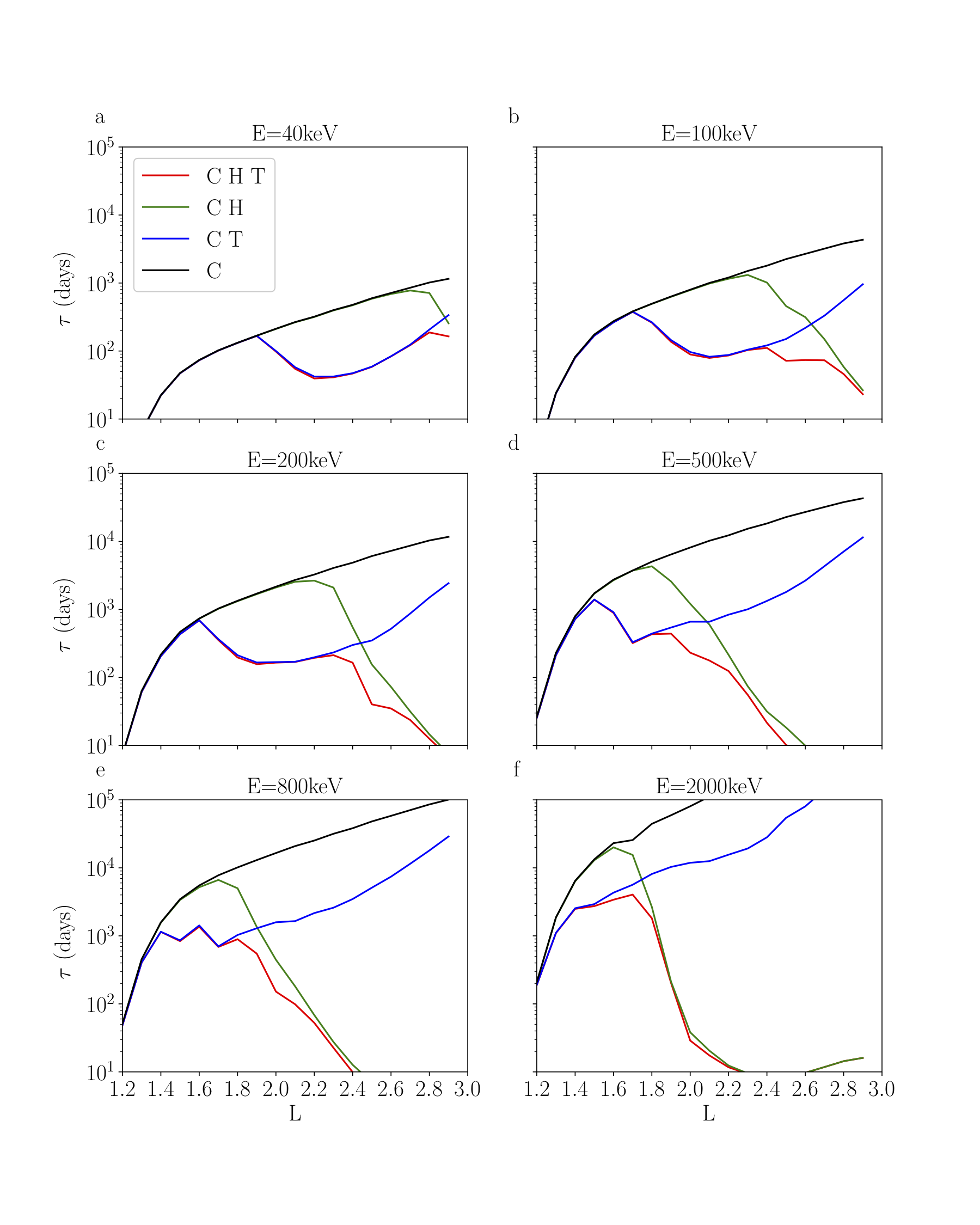MIST
Magnetosphere, Ionosphere and Solar-Terrestrial
Effects of VLF transmitter waves on the inner belt and slot region
by Johnathan Ross (British Antarctic Survey)
Signals from man made VLF (Very Low Frequency) transmitters can leak from the Earth-ionosphere wave guide into the inner magnetosphere, where they propagate as electromagnetic waves and contribute to electron dynamics in the inner radiation belt and slot region. These waves are highly localised around the transmitters and are strongest on the nightside. It has been suggested that these waves may be responsible for removing the hazardous MeV energy electrons from this region that can be extremely damaging to satellites. The VLF transmitter waves scatter electrons in pitch angle (the angle between the background field and electron velocity). In an average sense, this scattering can be represented by a diffusion equation, with a diffusion coefficient that can be calculated using quasi-linear theory. In this study we use ~5 years of Van Allen Probesobservations to construct global statistical models of the diffusion coefficients for each individual VLF transmitter, as a function of L*, Magnetic Local Time (MLT) and geographic longitude.
These diffusion coefficients are then incorporated into a 1D pitch-angle diffusion model with longitude and MLT dependence. We find that global averages of the wave power capture the long-term dynamics of the loss process, despite the highly localised nature of the waves in space. We use our model to assess the role of VLF transmitter waves compared to other important loss processes (hiss waves and coulomb collisions) on electron loss in the inner radiation belt and slot region. The figure shows the decay timescales as a function of L value for different combinations of the VLF transmitter (T), coulomb collisions (C), and hiss wave (H) processes. At moderate relativistic energies, E~500 keV (panel d), waves from VLF transmitters have a significant role! They reduce electron lifetimes by an order of magnitude or more, down to the order of 200 days near the outer edge of the inner radiation belt. However, VLF transmitter waves are ineffective at removing multi-MeV electrons (panel f) from either the inner radiation belt or slot region. The results suggest that although the VLF transmitters are important for radiation belt loss, they cannot be responsible for removing the dangerously high energy electrons from the region occupied by satellites.
For more information, please see the paper:
Ross, J. P. J., Meredith, N. P., Glauert, S. A., Horne, R. B., & Clilverd, M. A. ( 2019). Effects of VLF transmitter waves on the inner belt and slot region. Journal of Geophysical Research: Space Physics, 124, 5260– 5277. https://doi.org/10.1029/2019JA026716

Figure: Electron decay timescales from the 1D model with MLT and longitude averaging. The lines correspond to: black - Coulomb collisions; green - hiss and Coulomb collisions; blue - VLF transmitters and Coulomb collisions; red - VLF transmitters, hiss and Coulomb collisions.